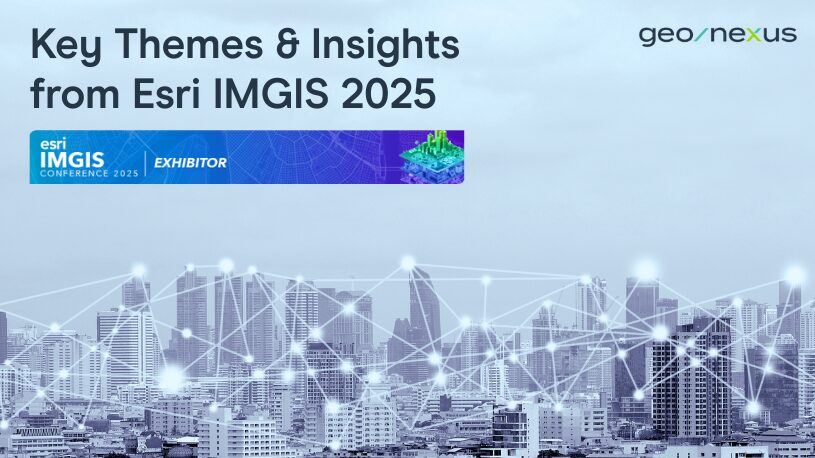
The 2025 Esri Infrastructure Management & GIS Conference (IMGIS) brought together leaders across electric, gas, and water utilities to discuss the next phase of digital transformation. From Utility Network migrations to Maximo upgrades and workforce transitions, one theme stood out across every session and conversation: modernization requires integration.
Below are five key themes and insights shaping the industry as we look ahead to 2026 and beyond.
Across the industry, utilities are doubling down on modernization initiatives that span their entire enterprise. These efforts go beyond upgrading individual systems — they focus on creating unified, interoperable environments that connect GIS, asset management, ADMS, OMS, and CIS platforms.
A major takeaway from IMGIS: the shift toward a platform-based approach is accelerating. Instead of tackling projects in isolation, utilities are seeking long-term efficiency through integrated technology stacks. The goal is to optimize data flow, improve decision-making, and future-proof operations against rapid technology and infrastructure changes.
The Utility Network remains a dominant focus area, with many organizations deep into planning, data readiness, and integration work. But it’s clear that UN migration is no longer viewed as just a GIS upgrade — it’s an enterprise transformation effort.
At IMGIS, conversations frequently centered on how the Utility Network interacts with other enterprise systems such as IBM Maximo, SAP, Oracle, and ADMS. Successful migrations are defined not only by clean data and new capabilities, but by seamless interoperability across departments. Integration continues to be the deciding factor in how quickly and effectively utilities can adopt and realize value from UN.
In parallel with UN migrations, utilities are modernizing asset management environments by moving from legacy Maximo versions to Maximo Application Suite (MAS 9). These transitions carry both technical and organizational challenges — particularly around integration, workflows, and user adoption.
At IMGIS, attendees emphasized the importance of aligning GIS and asset management systems to improve reliability, work execution, and reporting accuracy. When done right, this alignment provides a real-time view of asset health, streamlines field operations, and supports better capital planning.
Many utilities are also taking the opportunity to retire aging or unsupported systems in favor of Esri’s modern GIS platform. These migrations often occur as part of broader digital transformation programs focused on simplifying the technology stack, consolidating data, and enhancing usability for end users.
The message was clear: modernization isn’t just about keeping pace with technology — it’s about enabling teams to work more efficiently, access trusted data, and collaborate across systems.
A recurring topic of conversation at the booth this year was the impending retirement wave among experienced utility staff. Many organizations are focusing on knowledge capture, process documentation, and standardization to ensure continuity.
Investments in system modernization are increasingly tied to workforce strategy. By digitizing processes and creating consistent, integrated systems, utilities can reduce dependence on institutional knowledge while empowering new employees with accessible, well-structured data.
IMGIS 2025 reinforced what many in the industry already know — that modernization is complex, interconnected, and deeply dependent on strong data integration. Whether migrating to the Utility Network, upgrading to MAS 9, or replacing legacy GIS systems, utilities are recognizing that integration is the foundation for transformation.
Geonexus Technologies continues to support utilities at every stage of this journey — helping organizations simplify system connections, ensure data reliability, and unlock the full potential of their GIS and enterprise investments.